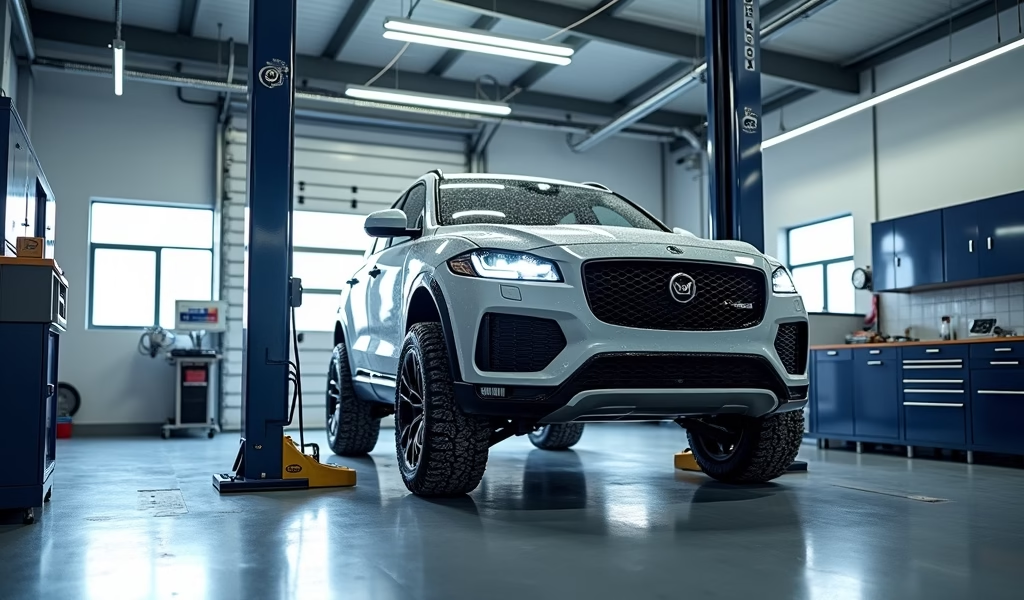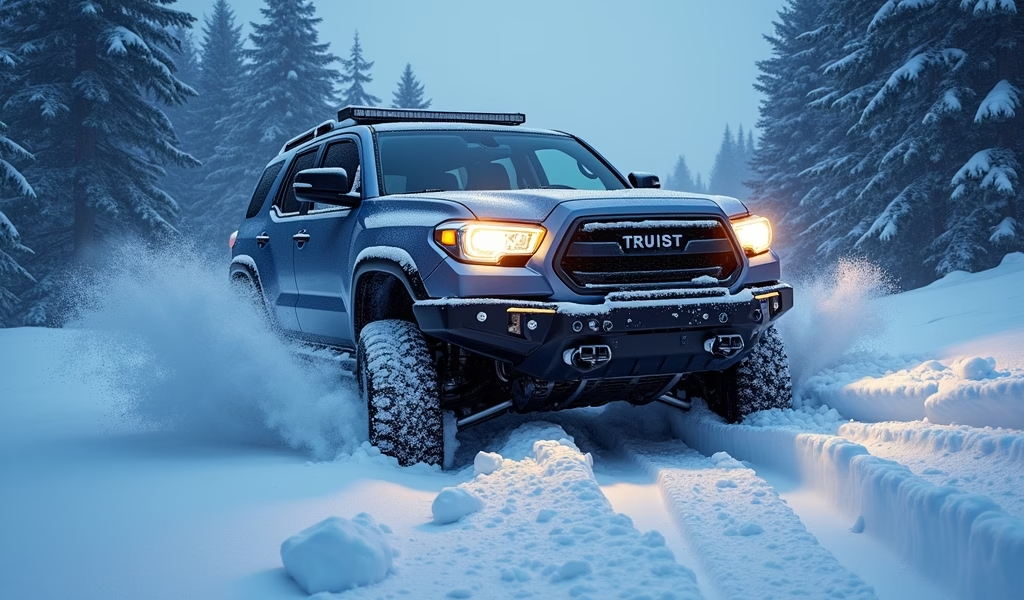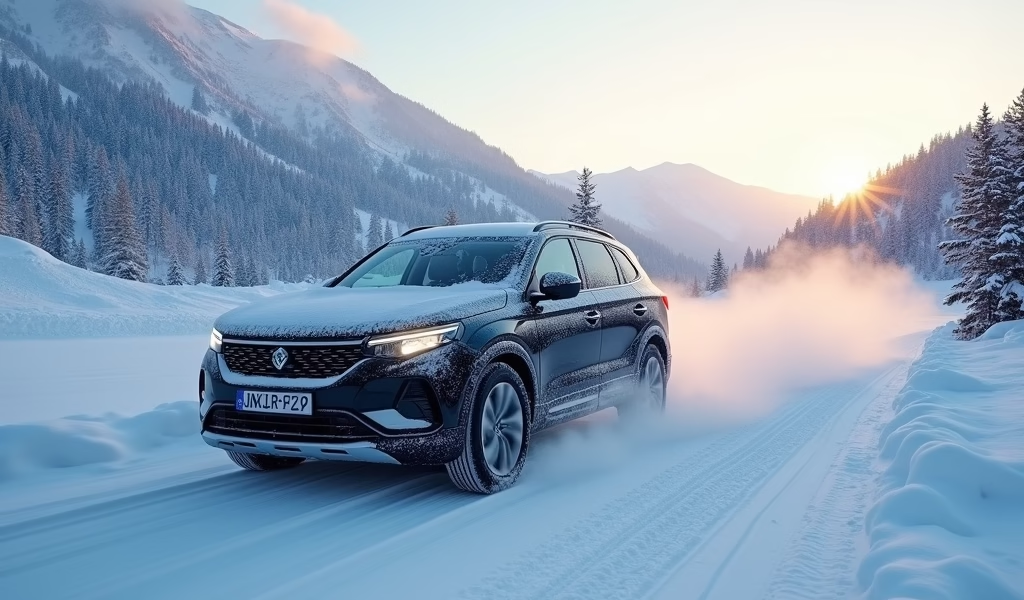Overview
This article identifies the best SUVs for winter driving (Subaru Outback, Volvo XC90, Jeep Grand Cherokee, Audi Q7, Toyota 4Runner, Honda CR-V, and Ford Expedition) while explaining that optimal winter performance depends on a combination of vehicle features (AWD/4WD, ground clearance, electronic stability systems), proper winter tires, appropriate driving techniques, and emergency preparedness. Beyond vehicle selection, the article emphasizes that safe winter driving requires proper maintenance, specialized winter tires, adjusted driving habits, and carrying emergency equipment for unexpected situations.
Table of Contents
- Understanding SUV Winter Performance
- Top 7 SUVs for Snow and Ice
- Essential Features for Snow-Capable SUVs
- Winter Driving Techniques
- Winter Maintenance Tips
- Tire Selection for Winter Driving
- Emergency Preparedness
- Conclusion
- Frequently Asked Questions
Understanding SUV Winter Performance
Finding the best SUVs for snow requires understanding what truly makes a vehicle winter-capable. While SUVs are often marketed as winter warriors, not all are created equal when it comes to tackling snowy roads and icy conditions.
The foundation of superior winter performance begins with a vehicle’s drivetrain. All-wheel drive (AWD) or four-wheel drive (4WD) systems distribute power to all four wheels, significantly improving traction on slippery surfaces. However, these systems operate differently—AWD typically works automatically, while 4WD might require driver engagement.
Ground clearance plays an equally crucial role in snow navigation. Higher clearance (ideally 8+ inches) prevents snow from building up underneath the vehicle and reduces the risk of becoming stranded in deeper accumulations. This measurement becomes particularly important when venturing beyond plowed roads.
Modern electronic assistance systems have revolutionized winter driving safety. Technologies like Electronic Stability Control (ESC), Traction Control Systems (TCS), and Anti-lock Braking Systems (ABS) work together to maintain control in slippery conditions. These systems can detect wheel slippage and automatically adjust power delivery or braking force to maintain stability.
Weight distribution affects how an SUV handles in winter conditions. A well-balanced vehicle with appropriate weight provides better traction and more predictable handling on snow and ice. Many premium SUVs are designed with careful attention to this aspect of engineering.
Regardless of how capable the SUV might be, winter tires remain the single most important factor in snow performance. Even the most advanced AWD system can’t compensate for inadequate tires. Quality winter tire compounds with appropriate tread patterns dramatically improve stopping distances and overall control.
Top 7 SUVs for Snow and Ice
After extensive testing and analysis, we’ve identified seven exceptional SUVs that consistently outperform in winter conditions. These vehicles combine the critical factors of drivetrain technology, ground clearance, and advanced safety systems to deliver confidence-inspiring winter performance.
1. Subaru Outback – The Outback’s symmetrical all-wheel-drive system provides exceptional balance and power distribution. Its 8.7 inches of ground clearance navigates deep snow with ease, while X-MODE optimizes the AWD system specifically for slippery conditions. The vehicle’s boxer engine layout creates a lower center of gravity for improved stability.
2. Volvo XC90 – Swedish engineering shines in this luxury SUV with its intelligent AWD system and 9.4 inches of ground clearance. The XC90’s advanced electronic stability control is calibrated specifically for winter performance. Its pre-tensioning safety systems provide additional protection in slippery conditions.
3. Jeep Grand Cherokee – With multiple 4×4 system options, including the advanced Quadra-Drive II system with an electronic limited-slip differential, the Grand Cherokee excels off-road and in severe weather. Selec-Terrain traction management allows drivers to choose specific settings for snow conditions.
4. Audi Q7 – Audi’s quattro all-wheel-drive system delivers exceptional snow performance with its ability to send power precisely where needed. The Q7’s adaptive air suspension can increase ground clearance when necessary, while its balanced weight distribution enhances stability in slippery conditions.
5. Toyota 4Runner – Built on a truck platform with true four-wheel drive capabilities, the 4Runner excels in deeper snow and more extreme conditions. Its 9.6 inches of ground clearance and robust drivetrain make it nearly unstoppable in winter conditions when properly equipped.
6. Honda CR-V – The CR-V’s intelligent AWD system monitors traction conditions and can redirect up to 40% of torque to the rear wheels when needed. While not as off-road focused as some others on this list, its reliability and refined AWD system make it an excellent choice for typical winter driving.
7. Ford Expedition – For those needing maximum space and capability, the Expedition combines a sophisticated 4WD system with impressive ground clearance. Its Terrain Management System includes a specific snow/wet mode that optimizes vehicle performance for winter conditions.

Essential Features for Snow-Capable SUVs
When evaluating the best SUVs for snow, specific features deserve special attention as they significantly enhance winter driving safety and capability.
Advanced traction management systems stand out as game-changers in modern SUVs. These intelligent systems go beyond basic traction control by offering specialized snow modes that adjust throttle sensitivity, transmission shift points, and stability control parameters. Look for vehicles with selectable drive modes specifically engineered for snow and ice.
Hill descent control provides automated brake management when navigating steep, slippery declines. This feature maintains a steady, controlled speed without driver brake input, preventing the dangerous sliding that can occur when brakes are applied on icy slopes. Similarly, hill start assist prevents rollback when starting on inclines.
Heated exterior elements improve visibility in winter conditions. Heated windshield wipers prevent ice buildup that can render wipers ineffective, while heated side mirrors ensure clear visibility of surrounding traffic. Some premium models even offer heated windshields that quickly clear ice without scraping.
Remote start capability allows the vehicle to warm up before driving, which not only improves comfort but also enhances mechanical performance. Engine oil flows better when warm, and transmission fluid reaches optimal operating temperature, improving overall drivability in cold conditions.
Undercarriage protection becomes valuable when driving through deeper snow potentially hiding obstacles. Skid plates protect vulnerable components like oil pans and transfer cases from damage if contact occurs with hidden objects.
The National Highway Traffic Safety Administration suggests that winter-specific safety systems like automatic braking and forward collision warning can be particularly beneficial in low-traction environments. Modern SUVs with comprehensive safety packages provide an extra layer of protection when winter conditions reduce natural stopping ability.
Must-Have Winter Safety Features
- Electronic Stability Control with Snow Mode
- Anti-lock Braking System with Electronic Brake-force Distribution
- Traction Control with Terrain-Specific Settings
- Hill Descent Control and Hill Start Assist
- Heated Mirrors, Wipers, and Windshield
- Remote Engine Start
- Adequate Ground Clearance (8+ inches)
- AWD or 4WD with Automatic Engagement
Winter Driving Techniques
Even the best SUVs for snow require proper driving techniques to maximize safety. Winter driving demands a different approach than dry-weather driving, with emphasis on smoothness and anticipation.
Gentle acceleration prevents wheel spin that can lead to loss of control. Modern AWD systems work best when power is applied gradually, allowing the computers to distribute torque appropriately. Jabbing the throttle overwhelms available traction and compromises the effectiveness of these systems.
Increased following distance becomes critical on snow and ice. The commonly recommended 3-second gap should be extended to 8-10 seconds in winter conditions. This additional space provides crucial reaction time when stopping distances increase dramatically on slippery surfaces.
Braking technique requires adjustment for winter conditions. Early, progressive brake application allows the ABS and stability systems to work most effectively. Pumping the brakes is counterproductive in modern vehicles—steady, increasing pressure lets the computer optimize braking for the conditions.
Corner approaches require significant modification in winter. Speed must be reduced before entering turns, as mid-corner braking can trigger slides. The entire cornering process should be slower and more deliberate, with minimal steering input to avoid overwhelming available grip.
Momentum management becomes particularly important in deeper snow. Maintaining steady progress without stopping (when safe to do so) prevents getting stuck. This technique requires planning and anticipation of traffic patterns and obstacles ahead.
Vision techniques should adapt to winter conditions. Looking farther ahead allows earlier recognition of potential hazards, giving more time to respond appropriately. Identifying patches of ice or deeper snow from a distance enables smoother avoidance maneuvers.
According to Insurance Institute for Highway Safety research, winter driving crashes often result from inappropriate speed for conditions rather than excessive absolute speed. Understanding how to adjust driving behavior based on current conditions proves more important than simply driving slowly.
Winter Driving Best Practices
- Accelerate gradually to prevent wheel spin
- Triple normal following distance (minimum 8 seconds)
- Apply brakes early and progressively
- Reduce speed before entering turns
- Maintain momentum when safe to do so
- Look farther ahead to anticipate hazards
- Avoid cruise control on slippery surfaces
- Steer smoothly without jerky movements
Winter Maintenance Tips
Proper preparation and maintenance significantly enhance the winter performance of any SUV. Regular attention to these key areas ensures your vehicle remains reliable throughout the winter season.
Battery health becomes particularly important as cold temperatures reduce battery efficiency by up to 50%. Batteries more than three years old should be load-tested before winter to ensure they maintain sufficient cranking power in freezing conditions. Connections should be clean and tight to prevent starting issues.
Fluid management requires special attention in winter. Using the correct viscosity engine oil ensures proper lubrication during cold starts—many manufacturers recommend switching to a lower viscosity during winter months. Antifreeze concentration should be tested to ensure protection at the lowest expected temperatures.
Visibility systems need comprehensive inspection before winter. Wiper blades should be replaced if showing any signs of wear or hardening. Washer fluid must be rated for below-freezing temperatures to prevent reservoir freezing. Headlights should be properly aimed and clear of oxidation for maximum visibility in snowy conditions.
Undercarriage inspection becomes crucial before winter driving. Road salt accelerates corrosion, making it important to repair any existing rust before winter begins. A thorough underbody wash after driving on salted roads helps prevent corrosion from taking hold.
Exhaust system integrity deserves special attention before winter. Small leaks can become dangerous when windows remain closed during cold weather. The entire exhaust path should be inspected for rust perforations or damaged connections that could allow carbon monoxide to enter the cabin.
Tire pressure monitoring takes on added importance in winter. Pressure drops approximately 1 PSI for every 10°F decrease in temperature. Underinflated tires reduce traction and increase fuel consumption, while overinflated tires reduce the contact patch needed for grip on snow and ice. Checking tread depth wear indicators ensures sufficient tread remains for winter driving.
Pre-Winter Maintenance Checklist
- Test battery condition and clean terminals
- Change to winter-weight oil if recommended
- Verify antifreeze protection to -30°F
- Replace worn wiper blades with winter-specific models
- Fill with winter-rated washer fluid
- Check headlight aim and clarity
- Inspect exhaust system for leaks
- Apply undercarriage rust protection
- Check TPMS operation and adjust pressures for cold weather
- Ensure emergency kit is stocked and accessible

Tire Selection for Winter Driving
Regardless of how advanced your SUV’s AWD or 4WD system might be, tire selection ultimately determines winter performance. Even the best SUVs for snow require appropriate tires to reach their full potential in winter conditions.
Dedicated winter tires represent the gold standard for snow and ice traction. These specialized tires utilize rubber compounds that remain flexible at lower temperatures, allowing the tread to conform to road surfaces for improved grip. The tread patterns incorporate deeper sipes (tiny slits) that create biting edges to grip snow and ice.
All-season tires, despite their name, provide compromised winter performance. While convenient for regions with mild winters, they lack the specialized compounds and aggressive tread patterns needed for significant snow accumulation or regular ice. The temperature at which all-season tires begin to harden and lose effectiveness is typically around 45°F.
All-weather tires have emerged as a middle ground, offering better winter performance than all-seasons while eliminating the need for seasonal changes. These tires carry the three-peak mountain snowflake symbol, indicating they meet minimum winter performance requirements. They represent a viable option for areas with moderate winter conditions.
Studded winter tires provide maximum traction on ice but come with significant drawbacks. The metal studs can damage road surfaces, leading to studded tire regulations that restrict their use in many jurisdictions. Additionally, they create considerable road noise and reduce performance on clear pavement.
Tire pressure management becomes particularly critical in winter. Cold temperatures cause tire pressure to decrease, potentially reducing traction and fuel economy. Regular pressure checks—preferably when tires are cold—help maintain optimal contact patch size and tread performance.
When evaluating tires for winter driving, the three-peak mountain snowflake symbol provides valuable guidance. This certification indicates the tire has been tested specifically for winter traction and meets minimum performance standards. It appears on both dedicated winter tires and certain all-weather options.
Winter Tire Selection Factors
- Temperature Rating (lower is better for winter performance)
- Tread Depth (deeper provides better snow traction)
- Siping Density (more sipes create more biting edges)
- Rubber Compound (softer compounds improve cold-weather flexibility)
- Three-Peak Mountain Snowflake Certification
- Studded vs. Non-Studded Options (based on local conditions and regulations)
- Size Compatibility with OEM Specifications
Emergency Preparedness
Even with the best SUVs for snow and proper winter driving techniques, emergencies can still occur. Being prepared for winter-specific situations can mean the difference between a minor inconvenience and a dangerous ordeal.
A winter emergency kit should be considered essential equipment in any vehicle during cold months. This kit should include items specifically chosen to address winter emergencies, including methods to stay warm, signal for help, and potentially extract the vehicle from snow.
Communication tools become vital during winter emergencies. A fully charged mobile phone with a car charger provides the primary means of calling for assistance. In remote areas where cellular service may be unavailable, consider carrying a personal locator beacon for emergency signaling.
Extraction equipment helps when your SUV becomes stuck despite its winter capability. Folding shovels allow clearing snow from around tires, while traction aids such as sand, cat litter, or purpose-made traction mats provide grip when wheels are spinning on ice.
Visibility aids ensure rescuers can locate you during winter emergencies. Reflective triangles, LED flares, or emergency strobe lights should be placed at appropriate distances from the vehicle to warn approaching traffic and guide emergency responders.
Thermal management items help maintain body temperature if stranded for extended periods. Emergency blankets (sometimes called space blankets) reflect body heat and take minimal space. Hand and foot warmers provide targeted heat for extremities most vulnerable to frostbite.
According to the Federal Emergency Management Agency, staying with your vehicle during a winter emergency is usually the safest option. The vehicle provides shelter from the elements and is easier for rescuers to spot than an individual person.
Winter Emergency Kit Essentials
- Folding shovel for snow removal
- Traction aids (sand, cat litter, or commercial products)
- Jumper cables or portable jump starter
- Emergency blankets and warm clothing layers
- High-visibility reflective triangles or LED flares
- Fully charged mobile phone and car charger
- Flashlight with extra batteries
- Non-perishable food and water
- First aid kit with winter-specific additions
- Hand and foot warmers
Conclusion
Finding the best SUVs for snow requires understanding the combination of features that truly enhance winter performance. While all-wheel drive or four-wheel drive provides the foundation, factors like ground clearance, electronic stability systems, and overall vehicle design significantly impact capability.
The seven SUVs highlighted—Subaru Outback, Volvo XC90, Jeep Grand Cherokee, Audi Q7, Toyota 4Runner, Honda CR-V, and Ford Expedition—consistently demonstrate excellent winter performance through their thoughtful engineering and specialized features. Each offers distinct advantages depending on specific needs and winter conditions.
Beyond vehicle selection, proper preparation plays an equally important role in winter driving success. From selecting appropriate tires to maintaining vital systems and carrying emergency equipment, these preparations ensure your SUV can perform at its best when conditions are at their worst.
Winter driving techniques require adjustment from fair-weather habits. Gentle inputs, increased following distances, and proper vision techniques dramatically improve safety in challenging conditions. These skills complement the capability of your SUV rather than relying entirely on technology.
Ultimately, safe winter driving comes from the synergy between a capable vehicle, proper equipment, thoughtful preparation, and adjusted driving techniques. With this comprehensive approach, winter driving can be managed confidently and safely, allowing you to embrace the season rather than fear it.
Frequently Asked Questions
Are SUVs actually better in snow than sedans?
SUVs typically perform better in snow due to higher ground clearance and available AWD/4WD systems. However, a sedan with winter tires will outperform an SUV with all-season tires in most winter conditions.
Is AWD or 4WD better for snow driving?
Both systems offer advantages in snow, with AWD typically providing better on-road performance and automatic operation. Traditional 4WD can provide more capability in extreme conditions but may require manual engagement.
Can I use all-season tires for winter driving?
All-season tires provide adequate performance in light winter conditions but significantly compromise traction in deep snow or on ice. Dedicated winter tires deliver superior performance in temperatures below 45°F.
How important is ground clearance for winter driving?
Ground clearance becomes critical when snow depth exceeds 4-6 inches. Vehicles with 8+ inches of clearance navigate deep snow more effectively and reduce the risk of becoming high-centered on snow berms.
Should I manually shift to low gear in snow?
Using lower gears can help maintain control by limiting wheel slip and providing engine braking. Many modern SUVs include specific winter/snow modes that automatically optimize transmission settings for winter conditions.

